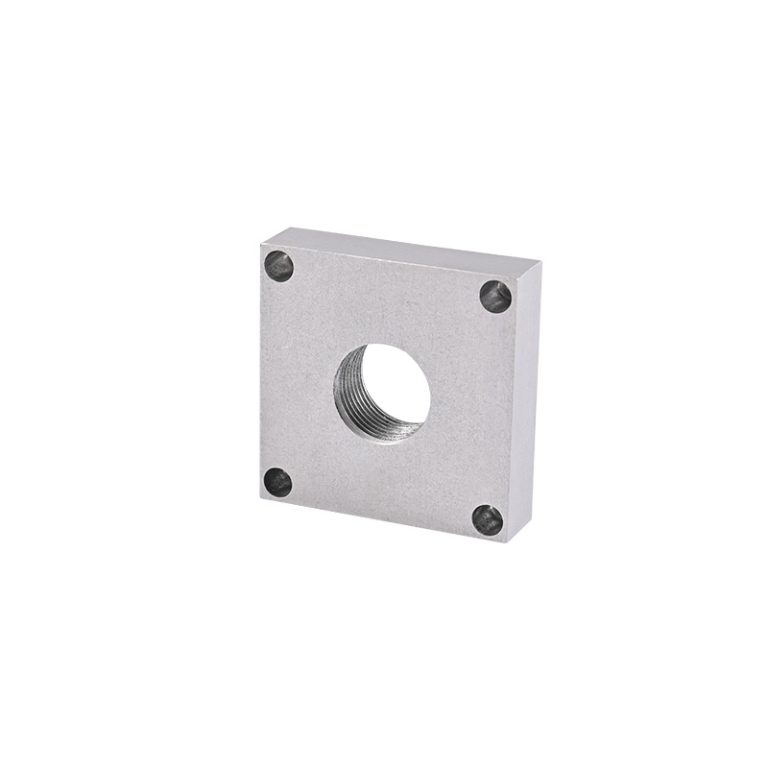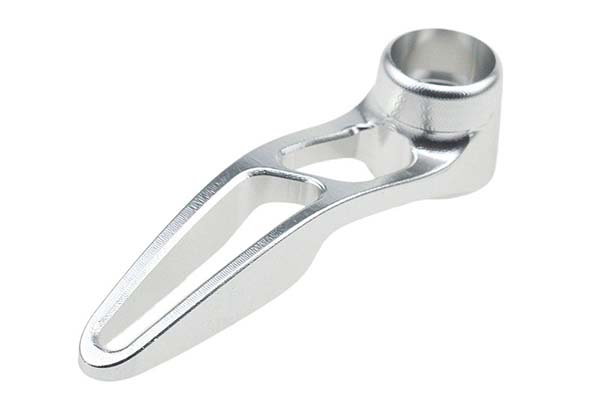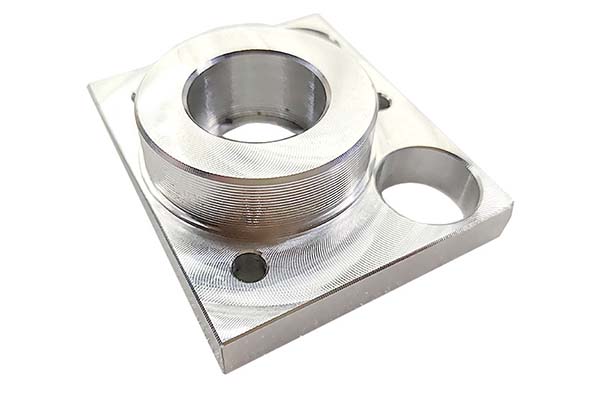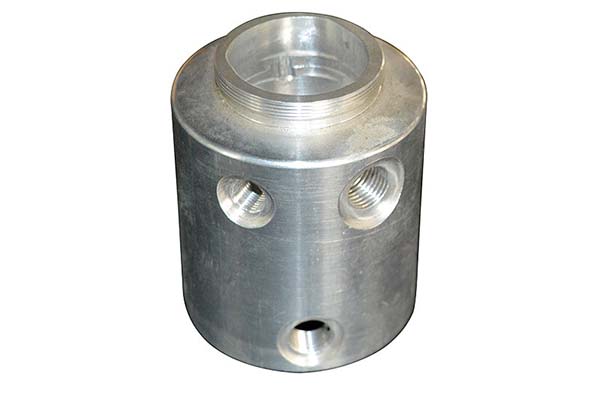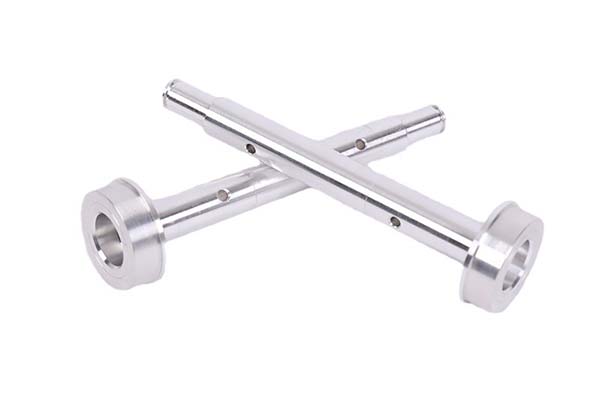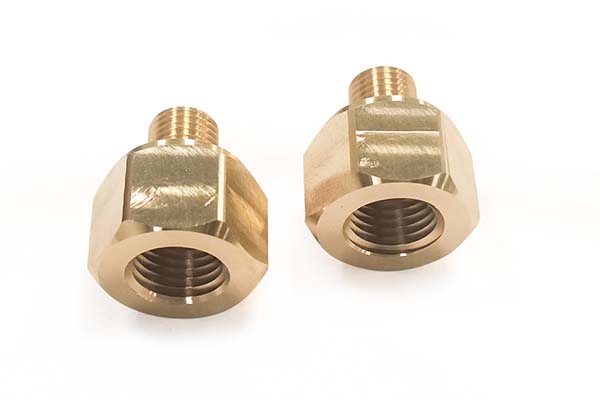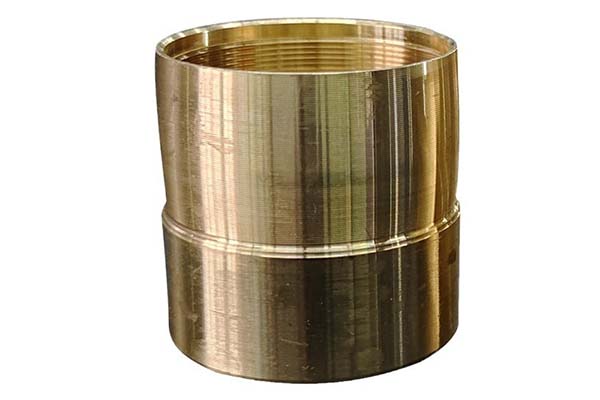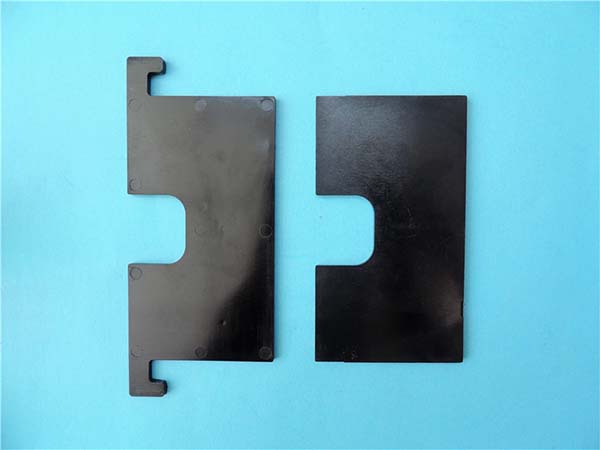Introduction to Laser Welding
Laser welding, a transformative technology in modern manufacturing, leverages high - energy laser beams to fuse materials with unmatched precision. By focusing light energy into an extremely small area, this process creates deep, narrow welds with minimal heat distortion. As industries demand lighter, stronger, and more durable products, laser welding has emerged as a cornerstone in sectors ranging from automotive to aerospace. Yigu Technology explores its principles, applications, advantages, and future potential, backed by technical insights and comparative data.
Principle of Laser Welding
At its core, laser welding is based on the interaction between a laser beam and the workpiece material. Lasers generate intense light beams with high energy density. When this beam is focused onto the surface of the materials to be welded, several key physical processes occur.
First, the laser beam is produced by a laser source, which can be a solid - state laser (such as a neodymium - doped yttrium aluminum garnet - Nd:YAG laser), a fiber laser, or a CO₂ laser. Each type of laser has its unique wavelength and power characteristics. For Yigu Technology example, fiber lasers typically operate in the near - infrared range (around 1064 nm) and are known for their high efficiency and good beam quality.
The laser beam then passes through an optical system that focuses it onto the workpiece. The focused laser spot has a very small diameter, often in the range of tens to hundreds of micrometers. When the high - energy laser beam hits the material surface, the material rapidly absorbs the laser energy. Metals, for instance, have high absorption rates for laser light at certain wavelengths. The absorbed energy causes the temperature of the material in the focal area to rise rapidly, often reaching the melting or even vaporization point within a very short time.
As the material melts, a molten pool is formed. If the laser beam is moved along the welding path, the molten pool moves with it, and when the laser beam moves away, the molten material cools and solidifies, forming a continuous weld joint. In some cases, when the laser power is high enough, a keyhole may be created in the molten pool. The keyhole is a deep, vapor - filled cavity that allows the laser beam to penetrate deeper into the material, resulting in a deeper and narrower weld, known as keyhole welding. This is in contrast to conduction - mode welding, where the heat is mainly transferred by conduction from the surface, resulting in a shallower and wider weld.
Comparison with Traditional Welding Methods
To better understand the significance of laser welding, it's crucial to compare it with traditional welding techniques such as arc welding and resistance welding.
| Welding Method | Energy Source | Heat Affected Zone (HAZ) | Weld Penetration Depth (for 3 - mm thick steel) | Welding Speed (for 3 - mm thick steel) |
| Laser Welding | Laser beam | Small, typically less than 1 mm | Up to 8 - 10 mm in keyhole mode | 5 - 10 m/min |
| Arc Welding (e.g., Gas Metal Arc Welding - GMAW) | Electric arc | Larger, around 2 - 5 mm | Around 3 - 5 mm | 1 - 3 m/min |
| Resistance Welding | Electric current | Moderate, around 1 - 3 mm | Limited, typically less than 3 mm | High for spot welding, but complex for continuous welding |
- Heat Affected Zone (HAZ)
- In laser welding, the HAZ is significantly smaller due to the highly concentrated energy of the laser beam. This is a major advantage when working with heat - sensitive materials or when dimensional accuracy is crucial. For Yigu Technology example, in the electronics industry, where components are often sensitive to heat, laser welding can minimize the risk of damage to adjacent components.
- Arc welding, on the other hand, has a relatively large HAZ because the heat is distributed over a larger area around the weld. This can cause changes in the material's microstructure and mechanical properties in the HAZ, potentially leading to reduced strength or increased brittleness.
- Weld Penetration Depth
- Laser welding, especially in keyhole mode, can achieve a much deeper penetration depth for a given material thickness. This makes it suitable for welding thick - section materials with fewer passes. For instance, in aerospace applications, where joining thick titanium alloy components is common, laser welding can provide a single - pass solution that saves time and improves joint integrity.
- Arc welding typically requires multiple passes to achieve similar penetration depths in thick materials, which increases the welding time and the risk of defects due to repeated heating and cooling cycles.
- Welding Speed
- Laser welding offers high welding speeds, which is beneficial for high - volume production. In the automotive industry, for Yigu Technology example, laser welding is used to join body panels at high speeds, increasing production efficiency.
- Resistance welding has high speeds for spot welding but is more complex and slower for continuous welding applications. Arc welding speeds are generally lower compared to laser welding, especially for thicker materials.
The Science Behind Laser Welding
How Lasers Generate Welds
Laser welding is a complex process rooted in the principles of photonics and material science. At its core, lasers generate intense light beams through a process known as stimulated emission. In a laser system, a gain medium, which can be a gas (such as CO₂), a solid (like Nd:YAG - neodymium - doped yttrium aluminum garnet), or a semiconductor, is excited. This excitation causes electrons within the gain medium to move to higher - energy states. When these excited electrons return to their lower - energy states, they emit photons. Through a process of particle number inversion, where there are more electrons in the higher - energy states than in the lower - energy states, and optical resonance within a cavity formed by mirrors, the emitted photons are amplified and form a highly coherent and collimated laser beam.
The key to laser welding lies in the extremely high power density of the laser beam. Once generated, the laser beam is focused onto the workpiece using optical lenses or mirrors. The focused beam can achieve power densities in excess of \(10^6 \, \text{W/cm}^2\). When this high - power - density beam strikes the surface of the materials to be welded, the energy is rapidly absorbed by the material. For metals, which are good absorbers of laser light at certain wavelengths, the absorbed energy causes the material to heat up rapidly. In a very short time, the temperature of the material in the focal area can reach the melting point or even the vaporization point.
As the material melts, a molten pool is formed. If the laser beam is moved along the intended welding path, the molten pool moves with it. When the laser beam moves away, the molten material cools and solidifies, forming a continuous weld joint. In the case of keyhole welding, which occurs at even higher power densities, the vaporization of the material creates a deep, vapor - filled cavity (the keyhole) in the molten pool. The laser beam can then penetrate deeper into the material through this keyhole, resulting in a deeper and narrower weld. This is in contrast to conduction - mode welding, where heat is mainly transferred by conduction from the surface, leading to a shallower and wider weld.
Key Parameters
- Power Density
- Power density is one of the most critical parameters in laser welding. It is defined as the power of the laser beam divided by the area of the focused spot on the workpiece. Mathematically, \(Power\ Density=\frac{Power}{Spot\ Area}\). A high power density is essential for achieving deep - penetration welds, especially in keyhole welding. For example, in welding thick - section steel plates, a power density of at least \(10^6 \, \text{W/cm}^2\) is often required to create a keyhole and achieve sufficient penetration. When the power density is too low, the heat input may not be enough to melt the material adequately, resulting in weak or incomplete welds. On the other hand, if the power density is too high, it can cause excessive vaporization, spatter, and even burn - through of the workpiece.
- Pulse Duration
- Pulse duration plays a crucial role in controlling the heat input and cooling rates during laser welding. In pulse - mode laser welding, the laser emits short pulses of light. The pulse duration determines how long the material is exposed to the laser energy. A shorter pulse duration delivers a high - energy burst in a short time, which can lead to rapid heating and cooling. This is beneficial for welding thin materials or materials that are sensitive to heat, as it minimizes the heat - affected zone. For instance, in micro - welding of electronic components, pulse durations in the nanosecond to microsecond range are commonly used. Longer pulse durations, in the millisecond range, are more suitable for thicker materials or when a larger heat input is required to achieve sufficient melting and penetration. However, longer pulses also increase the heat - affected zone and the risk of thermal distortion.
- Beam Focus
- The beam focus determines the spot size and energy concentration of the laser beam on the workpiece. A well - focused beam with a small spot size can achieve a high power density, which is essential for deep - penetration welding. The focus of the laser beam can be adjusted by changing the distance between the focusing optics and the workpiece (known as the working distance) or by using different focusing lenses. In some laser welding systems, the focus can be dynamically adjusted during the welding process to adapt to changes in the workpiece thickness or welding requirements. For Yigu Technology example, in robotic laser welding of complex - shaped components, the ability to adjust the beam focus in real - time allows for consistent weld quality across different parts of the workpiece. The spot size of the focused beam is typically in the range of tens to hundreds of micrometers, and even small changes in the beam focus can have a significant impact on the welding quality, affecting parameters such as weld depth, width, and the formation of defects like porosity.
Advantages of Laser Welding
Precision and Efficiency
- Narrow Heat-Affected Zone (HAZ)
- One of the most remarkable features of laser welding is its ability to create an extremely narrow heat - affected zone. When compared to traditional welding methods, laser welding's HAZ is often less than 1 mm, as opposed to 2 - 5 mm in arc welding. This is due to the highly concentrated energy of the laser beam. For delicate components, such as those in the electronics industry, minimizing the HAZ is crucial. In the manufacturing of micro - electronic devices, where components are closely packed and sensitive to heat, a large HAZ could potentially damage adjacent components, leading to device failure. With laser welding, the risk of such damage is significantly reduced, ensuring the integrity and functionality of the final product.
- High Weld Strength
- Laser - welded joints often exhibit high strength. In many cases, the strength of the weld joint can exceed 70% of the base material's strength. For example, in the jewelry industry, when repairing precious metal items, laser - welded joints are 70% stronger than those created by traditional soldering methods. This high weld strength is attributed to the rapid heating and cooling process in laser welding, which results in a fine - grained microstructure in the weld area. The fine - grained structure enhances the mechanical properties of the weld, making it more resistant to stress and fatigue.
- Speed
- Laser welding offers impressive speed, especially when working with thin materials. It can be up to 10 times faster than conventional welding methods. In the automotive industry, where large - scale production of thin - walled body panels is required, laser welding's high speed allows for increased production rates. For instance, when joining 1 - mm - thick steel sheets in an automotive manufacturing line, laser welding can complete the process at a speed of 5 - 10 m/min, while traditional arc welding might only achieve 1 - 2 m/min. This significant increase in speed not only boosts productivity but also reduces production costs by shortening the overall production cycle.
Versatility
- Material Compatibility
- Laser welding is highly versatile in terms of the materials it can process. It works effectively on a wide range of metals, including stainless steel, aluminum, and titanium. Stainless steel, with its excellent corrosion - resistance properties, is commonly used in the food and beverage, medical, and construction industries. Laser welding can join stainless - steel components with high precision, maintaining the material's corrosion - resistance characteristics. Aluminum, known for its low density and good thermal conductivity, is widely used in the aerospace and automotive industries. Laser welding can handle aluminum materials, creating strong and durable joints. Moreover, laser welding can even be used on composite materials and dissimilar materials. In the aerospace industry, the combination of different materials to achieve specific performance requirements is common. Laser welding enables the joining of materials such as titanium and aluminum, which have different melting points and thermal expansion coefficients, opening up new possibilities for material design and component manufacturing.
- Remote Operation
- The ability to deliver laser beams via fiber optics enables remote operation. This feature is particularly useful in situations where access to the welding area is difficult or dangerous. In nuclear power plants, for example, maintenance and repair work often involve radioactive environments. Laser welding can be performed remotely using robotic arms with fiber - optic - delivered laser beams. The operator can control the welding process from a safe distance, reducing the risk of radiation exposure. In addition, in the manufacturing of complex - shaped components with hard - to - reach internal structures, such as turbine blades, laser welding can be carried out remotely, reaching areas that are inaccessible to traditional welding equipment. This remote operation capability also facilitates automation in manufacturing processes, as the laser - welding system can be integrated into a robotic production line, increasing production efficiency and consistency.
Cost - Effectiveness
- Reduced Post - Processing
- Laser - welded joints typically require minimal post - processing. The smoothness of laser - welded seams means that less time and resources are spent on surface finishing operations such as grinding, polishing, or sandblasting. In the production of high - end consumer products like smartphones or luxury watches, where the appearance of the product is crucial, laser - welded components can be directly assembled without extensive post - processing. This not only saves time but also reduces the cost associated with additional processing steps. In contrast, traditional welding methods often leave behind rough weld beads that need to be removed or smoothed, adding to the overall production cost.
- Lower Material Waste
- Precise energy control in laser welding minimizes material waste. The highly focused laser beam allows for accurate melting and joining of materials, reducing the need for excess filler materials. In the manufacturing of small - scale components, such as in the jewelry or micro - electronics industries, the cost of materials can be a significant factor. With laser welding, the ability to precisely control the energy input means that less material is wasted, as there is no over - melting or unnecessary use of filler materials. Additionally, the narrow weld width in laser welding also contributes to lower material waste, as less material is consumed in the welding process compared to wider - weld traditional methods.
Applications Across Industries
Automotive Manufacturing
- Body - in - White Welding
- In the automotive industry, reducing vehicle weight while enhancing safety is a constant pursuit. Laser welding has emerged as a game - changer in body - in - white (BIW) construction. By using laser welding for components such as door frames and roof panels, vehicle weight can be reduced by approximately 20%. This weight reduction is achieved through the use of thinner, high - strength materials that can be effectively joined with laser welding. For Yigu Technology example, in a modern sedan, the use of laser - welded door frames allows for a more streamlined design with less material, yet the joint strength is significantly improved.
- Crash resistance is also enhanced. A study by a leading automotive research institute found that vehicles with laser - welded BIWs showed a 30% improvement in crash - test performance compared to those with traditional welding methods. The high - strength laser - welded joints can better distribute the impact energy during a collision, protecting the vehicle's occupants more effectively. In the case of a side - impact crash, the laser - welded door frames can maintain their structural integrity, reducing the intrusion into the passenger compartment.
- Battery Production
- With the rise of electric vehicles, the production of high - quality batteries is crucial. Laser welding plays a vital role in sealing battery cells. In the manufacturing of lithium - ion batteries, such as those used in CATL's energy - storage solutions, laser welding can achieve micron - level accuracy in sealing. This precision is essential to prevent electrolyte leakage, which could lead to battery failure or even safety hazards.
- For instance, in a cylindrical battery cell, the laser - welded seal ensures that the electrolyte remains contained within the cell, maintaining its chemical stability and performance over time. The high - speed and precise nature of laser welding also allows for high - volume production. A typical battery production line using laser welding can seal thousands of cells per hour, meeting the growing demand for electric vehicle batteries.
Aerospace
- Titanium Alloy Welding
- In aerospace, the use of lightweight and high - strength materials is essential for improving aircraft performance. Titanium alloys, with their excellent strength - to - weight ratio and corrosion resistance, are widely used in aircraft structural components. Laser welding is the preferred method for joining titanium alloys due to its ability to create lightweight, high - strength joints.
- For example, in the construction of aircraft wings, laser - welded titanium alloy components can reduce the overall weight of the wing by up to 15% compared to traditional welding methods. This weight reduction directly contributes to improved fuel efficiency and increased range. The small heat - affected zone of laser welding also ensures that the mechanical properties of the titanium alloy are not significantly degraded, maintaining the structural integrity of the wing during flight.
- Jet Engine Parts
- Jet engines operate under extreme conditions, and the components must be highly reliable. Laser welding is used for both the repair and manufacturing of turbine blades. When repairing damaged turbine blades, laser welding can precisely fill cracks and defects with minimal thermal impact on the surrounding material.
- A case study of a major aerospace engine manufacturer showed that the use of laser welding for turbine - blade repairs increased the service life of the blades by 20%. In the manufacturing of new turbine blades, laser welding allows for the creation of complex internal cooling channels with high precision. These cooling channels are crucial for maintaining the integrity of the blades at high operating temperatures, ensuring the efficient operation of the jet engine.
Electronics and Jewelry
- Micro - Welding
- In the electronics industry, the trend towards miniaturization has led to the need for highly precise welding techniques. Laser welding is ideal for joining tiny components in smartphones, medical devices, and other small - scale electronics. For Yigu Technology example, in the assembly of a smartphone camera module, laser welding can precisely join the delicate lens holder to the sensor unit.
- The narrow heat - affected zone of laser welding ensures that the sensitive electronic components are not damaged during the welding process. A research report on micro - electronic manufacturing found that the use of laser welding in the production of medical implantable devices reduced the failure rate by 40% compared to traditional soldering methods. This is because laser welding can create strong, reliable joints without introducing contaminants or causing thermal stress that could affect the device's long - term performance.
- Jewelry Restoration
- Jewelry, especially intricate gold and silver pieces, requires delicate and precise repair techniques. Laser welding is widely used in jewelry restoration for its ability to make precise repairs while preserving the aesthetics of the piece. When repairing a broken chain or a damaged setting in a piece of jewelry, laser welding can create a seamless joint that is almost invisible to the naked eye.
- A survey of professional jewelers found that 80% of them preferred laser welding for jewelry restoration due to its high precision and minimal impact on the original design. For example, when restoring an antique gold necklace with intricate filigree work, laser welding can repair the damaged parts without disturbing the surrounding delicate patterns, maintaining the historical and artistic value of the jewelry.
Laser Welding vs. Traditional Methods: A Comparative Analysis
A detailed comparison between laser welding and traditional welding methods further highlights the former's superiority. Consider the following aspects:
| Comparison Aspect | Laser Welding | Arc Welding | Resistance Welding |
| Heat Affected Zone (HAZ) | Narrow, typically less than 1 mm | Larger, around 2 - 5 mm | Moderate, around 1 - 3 mm |
| Weld Penetration Depth (for 3 - mm thick steel) | Up to 8 - 10 mm in keyhole mode | Around 3 - 5 mm | Limited, typically less than 3 mm |
| Welding Speed (for 3 - mm thick steel) | 5 - 10 m/min | 1 - 3 m/min | High for spot welding, complex for continuous welding |
| Equipment Cost | High initial investment, low long - term cost | Low equipment cost, high labor cost | High equipment cost |
| Joint Strength | High, often exceeds 70% of base material strength | Moderate | High for spot - welded joints |
- HAZ and Precision
- Laser welding's narrow HAZ is a game - changer in precision - sensitive applications. In the production of micro - electronic components, such as the tiny connectors in a smartphone motherboard, the small HAZ ensures that the surrounding delicate circuitry remains unaffected. Traditional arc welding, with its larger HAZ, would risk damaging these adjacent components, leading to a higher failure rate in the final product.
- Penetration and Weld Quality
- The deep penetration capabilities of laser welding are invaluable for thick - section materials. In the construction of large - scale industrial pipelines, laser - welded joints can provide a single - pass solution for thick - walled pipes. This not only reduces the time and cost associated with multiple - pass welding but also improves the overall integrity of the joint. Arc welding, on the other hand, may require multiple passes, increasing the risk of defects due to repeated heating and cooling cycles.
- Speed and Productivity
- The high welding speed of laser welding significantly boosts productivity in high - volume production environments. In the automotive industry, where thousands of body panels need to be welded daily, laser welding can complete the process much faster than traditional methods. For Yigu Technology example, in a car manufacturing plant, laser welding can join body panels at a rate that is 5 - 10 times faster than traditional arc welding, enabling the production of more vehicles in a given time frame.
Conclusion
Yigu Technology Laser welding has firmly established itself as a revolutionary technology in modern manufacturing. Its ability to generate high - energy, precisely focused laser beams enables the creation of deep, narrow welds with minimal heat distortion, making it a preferred choice across a wide range of industries.
The comparison with traditional welding methods clearly demonstrates its superiority in terms of heat - affected zone, weld penetration depth, and welding speed. The small heat - affected zone reduces the risk of damage to adjacent components, while the deep penetration depth allows for efficient joining of thick - section materials, and the high welding speed boosts productivity.
In the automotive industry, laser welding contributes to vehicle weight reduction and enhanced crash resistance in body - in - white construction and ensures the high - quality production of battery cells. In aerospace, it enables the use of lightweight titanium alloys in aircraft structures and the reliable repair and manufacturing of jet - engine parts. In the electronics and jewelry industries, its precision is crucial for micro - welding and jewelry restoration.
However, like any technology, laser welding is not without its challenges. The high initial cost of equipment and the need for high - precision workpiece alignment are areas that can be further addressed. But with ongoing research efforts focused on optimizing welding processes, developing new materials, and integrating advanced control systems, the future of laser welding looks promising.
As industries continue to demand higher - quality products with improved performance and reduced environmental impact, laser welding will play an increasingly vital role. It has the potential to drive innovation in manufacturing, enabling the production of more complex and advanced components that meet the evolving needs of the global market. By leveraging laser welding technology, manufacturers can enhance their competitiveness, improve product quality, and contribute to a more sustainable and efficient manufacturing future.
